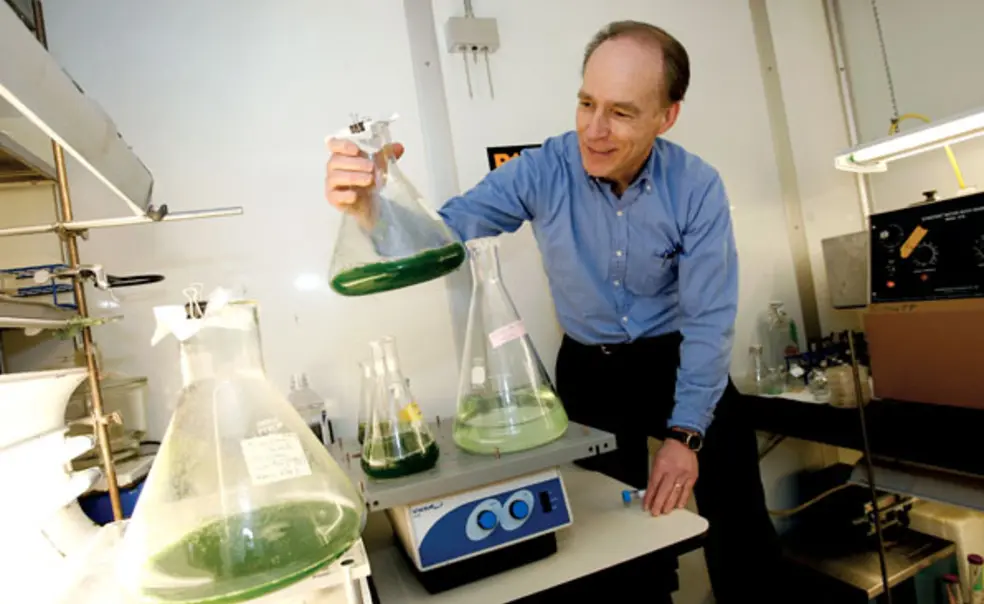Using cleaner-burning alternative fuels like hydrogen or biofuels to replace oil and gas has become an attractive idea for curbing carbon-dioxide emissions. But to supply those alternatives, researchers have to find a way to produce the fuels needed to replace fossil fuels without burning fossil fuels in the process.
Chemistry professor Charles Dismukes is exploring two ways to clear that hurdle. One employs algae and bacteria to make energy products such as hydrogen, biomass, or other fuel precursors. The other aims to use solar energy and a biologically inspired catalyst to drive hydrogen production from water.
In the first project, Dismukes’ group leads a consortium of seven laboratories to study a range of interesting organisms. The “bio-prospectors” are exploring some of the more than 4,500 classified species of cyanobacteria — single-celled bacteria that live in a variety of ecological niches — in hopes of finding potential fuel producers.
One of the most promising candidates that Dismukes has examined is Arthrospira, a type of green algae that lives in volcanic lakes in the Rift Valley of East Africa. Arthrospira, Dismukes’ lab has found, is “the fastest water-splitting enzyme on the
planet” and a prolific hydrogen producer. It also grows naturally in an extremely harsh environment where the pH level often climbs to 10 or 11, so it has a remarkable resistance to contaminants — a valuable trait if it were to be developed to produce biomass or hydrogen in large quantities.
The other avenue to hydrogen production that Dismukes is pursuing uses solar power and a synthesized, manganese-based catalyst to split water into hydrogen and oxygen. The technology eventually could be deployed on a sandwichlike photovoltaic cell coated with the water-splitting catalyst on one side and a proton-reducing catalyst on the other. The bio-inspired catalyst was designed to be structurally similar to the manganese core of a natural enzyme found in all photosynthetic water-splitting organisms.
The bio-inspired concept is powerful, according to Gerry Swiegers of Australia’s Commonwealth Scientific and Industrial Research Organization, one of Dismukes’ collaborators. “At this stage, it’s not where we want to be yet — it’s got to get quite a lot more efficient — but the principle is established,” Swiegers says.
For Dismukes, both projects contain exciting possibilities. He began working on energy research about six years ago, hoping to address global warming by applying some of what he’d learned in decades of studying the fundamentals of photosynthesis. In the process, he says, he has found a community of scientists committed to finding energy solutions.












No responses yet